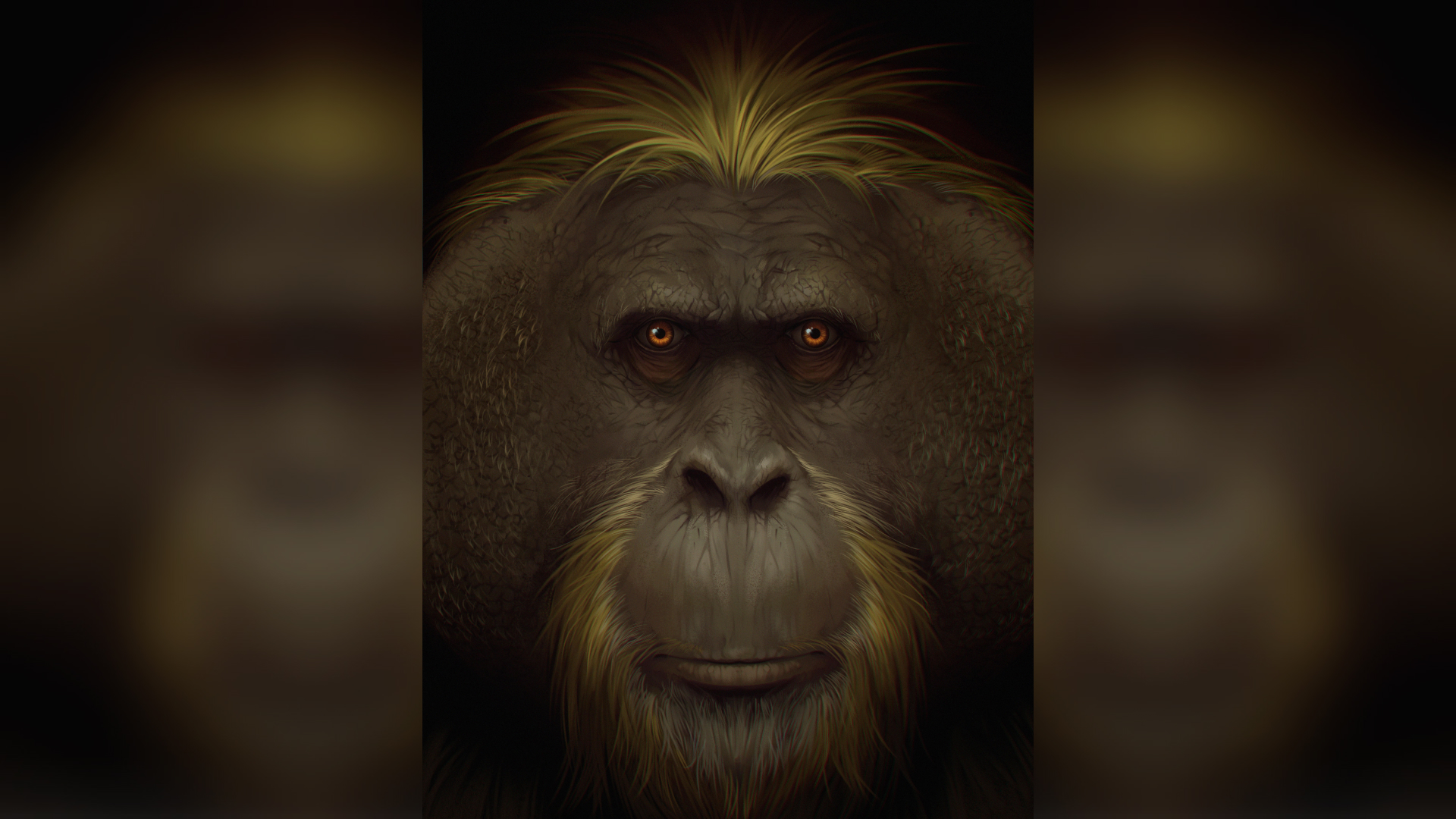Giganto, world's largest ape, went down poor evolutionary path toward extinction
Gigantopithecus blacki went extinct at least 215,000 years ago after climate change caused its forest home to vanish.

Scientists may have finally solved the mystery of why the largest ape ever to walk Earth went extinct, with new evidence suggesting the giant ape struggled to adapt to climate change.
In a new study published Jan. 10 in the journal Nature, scientists found that the largest known primate, Gigantopithecus blacki likely died out between 295,000 and 215,000 years ago after it failed to adapt its diet or behaviors to environmental changes that began around 700,000 years ago and put its dense forest habitat in what is now China under threat.
G. blacki first appeared about 2 million years ago. It was identified in 1935 by German paleontologist Gustav von Koenigswald after he stumbled upon molars belonging to the species. Since then, researchers have found thousands of teeth and a handful of partial jawbones — but no complete skeleton has ever been recovered.
The demise of this enormous primate, which grew up to 10 feet (3 meters) tall and weighed up to 600 pounds (270 kilograms), has long perplexed paleontologists as it is one of the few Asian great apes to go extinct in the last 2.6 million years.
"The story of G. blacki is an enigma in palaeontology — how could such a mighty creature go extinct at a time when other primates were adapting and surviving? The unresolved cause of its disappearance has become the Holy Grail in this discipline," paleontologist and co-lead author Yingqi Zhang, a professor at the Institute of Vertebrate Palaeontology and
Palaeoanthropology at the Chinese Academy of Sciences, said in a statement.
Related: Primates have been masturbating for at least 40 million years
Sign up for the Live Science daily newsletter now
Get the world’s most fascinating discoveries delivered straight to your inbox.

In the new study, the scientists analyzed fossilized teeth remains, pollen records and geological dates to find evidence of the giant ape's demise and establish a detailed timeline of its decline.
Using six different dating techniques to study the fossils and sediments from 22 cave sites in southern China, the scientists were able to date the fossil remains and create a comprehensive chronology for the extinction of the giant ape.
They found that 2.3 million years ago, during the late middle Pleistocene (2.6 million to 11,700 years ago), the giant ape enjoyed a fruit-rich diet and lived in dense canopy forest. However, around 600,000 to 700,000 years ago, this habitat began to change and gradually become open grasslands. Pollen and fossil analysis showed that during this period, the climate and plants became more seasonal and water availability was less consistent as the region began to experience dry seasons.
During this time, G. blacki got bigger, which increased the amount of food it required, and meant it was confined to the forest floor, where it likely ate bark when its preferred fruits were seasonally unavailable. The giant ape also had a reduced geographical range for foraging compared with other great apes.
This habitat change and the ape's inability to adapt ultimately doomed the species, the researchers found.
Previous research suggested that the giant ape went extinct around 200,000 years ago, but the new data show the species was already extinct by this time. By 300,000 years ago, its numbers had plummeted before it vanished altogether between 295,000 and 215,000 years ago.
"We have a much more robust timeline for their life and when they went extinct," co-lead author Kira Westaway, a geochronologist at Macquarie University in Australia, told Live Science. "It seems that G. blacki chose an evolutionary path that it couldn't reverse."
Westaway said understanding the demise of G. blacki is important as there are parallels with environmental conditions on Earth today. "Going back to past unresolved extinctions and determining the causes helps us understand why some species are more vulnerable and why others are more resilient," she said. "This has massive implications for the conservation efforts for our living primates such as modern orangutans and mountain gorillas."

Carys Matthews is a freelance writer for Live Science and has a passion for the natural world. Most recently the group digital editor of BBC Wildlife and BBC Countryfile Magazine, she writes about the outdoors, nature and health and fitness. Prior to this she has worked for a number of sports and environmental titles in the U.K.










